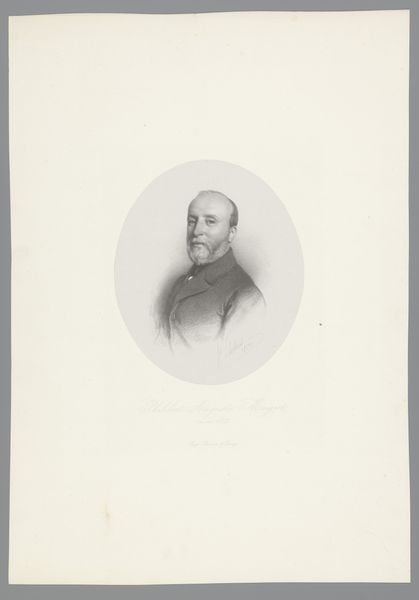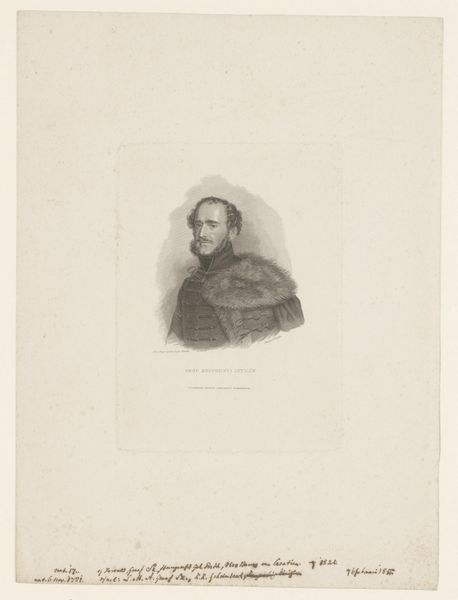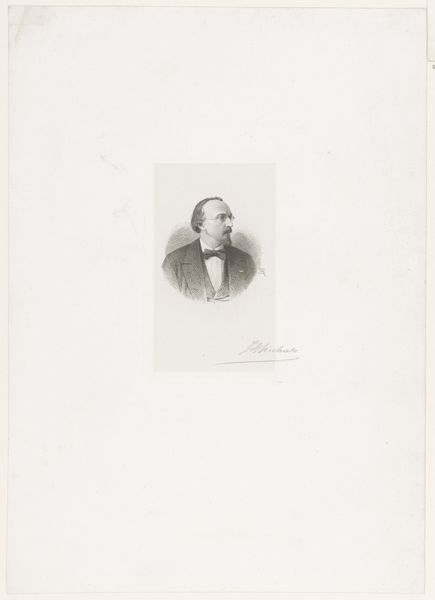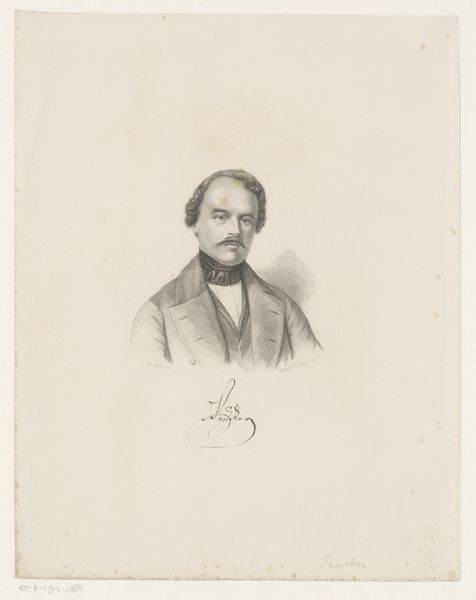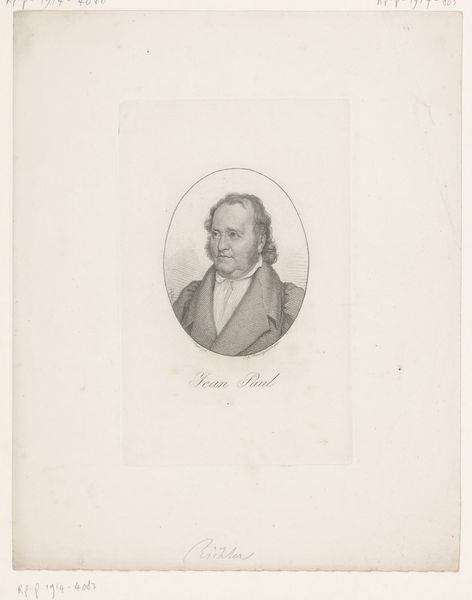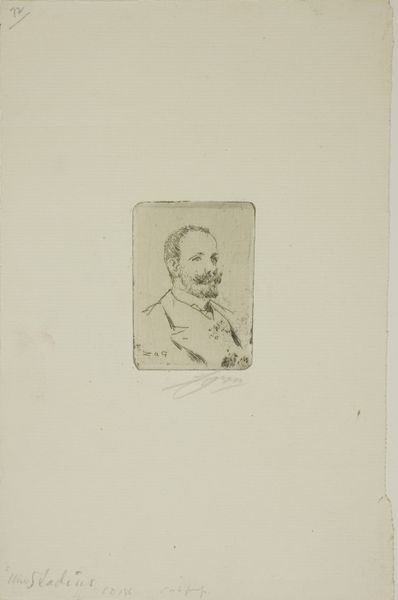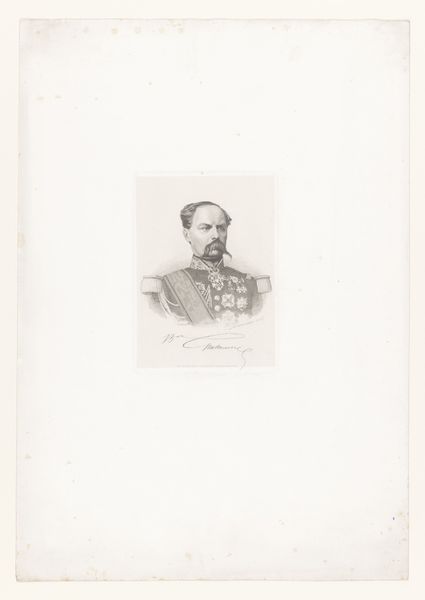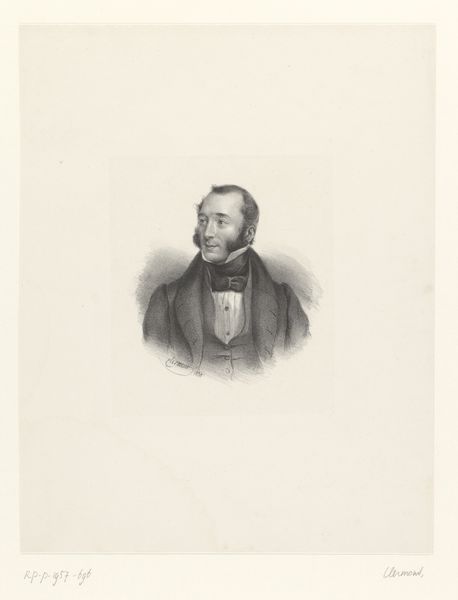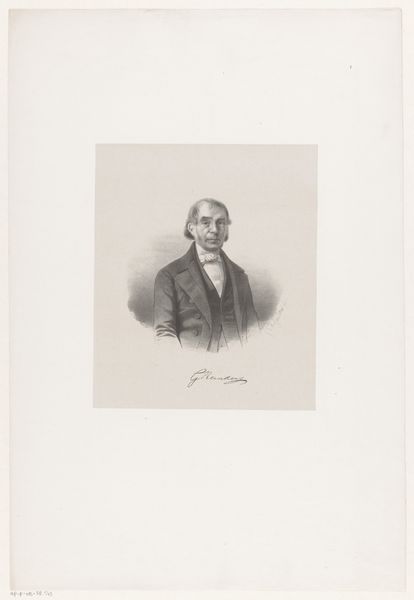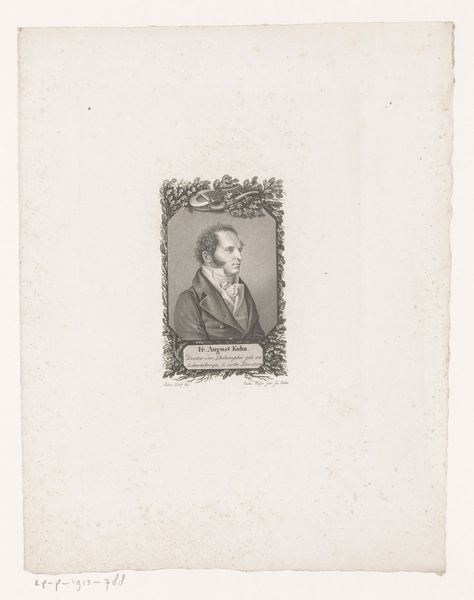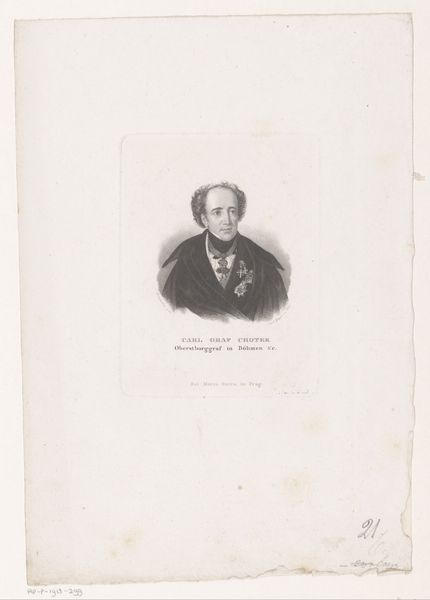
drawing, pencil
#
portrait
#
drawing
#
pencil
#
academic-art
#
realism
Dimensions: height 260 mm, width 188 mm
Copyright: Rijks Museum: Open Domain
Curator: Welcome. Let's explore this subtle yet powerful drawing, "Portret van Hippolyte Flandrin" created in 1864 by Léopold Flameng. It is executed in pencil. Editor: There’s something melancholic about this portrait; the shading, the slightly downturned gaze... it projects a sense of introspection. Curator: Absolutely. Considering Flameng’s background as an engraver and illustrator, notice the precise lines, almost mimicking the effect of etched metal. It speaks to the craftsmanship inherent in the printmaking world, translated here to pencil on paper. And this dates from a time of rising industrial print processes. Editor: His attire suggests a certain status. The cut of the coat, the waistcoat, even the carefully groomed beard, imply bourgeois respectability. Do you see how those details add a layer of social context? Curator: Indeed. And Flandrin himself was a celebrated painter associated with the Ingresque style. The portrait may reflect a particular understanding of male bourgeois identity during the mid-19th century. His calm, intellectual air, quite fashionable at the time, hints at the sitter's importance as an artist. Editor: I’m particularly drawn to the symbolic weight of that gaze. He’s not meeting our eyes, but rather looking slightly off to the side, as though lost in thought, inviting contemplation on our part. He looks the archetype of the suffering genius! Curator: Right. It reminds us that portraits aren't just likenesses; they are crafted representations that reflect both the sitter's self-perception and the artist's interpretation. How it all contributes to creating a market of personal portraiture. Editor: This encounter truly reveals how portraits not only reflect the material culture but also offer deep insight into the prevailing emotional and psychological ideals of their era. Thank you. Curator: Agreed. Exploring Flameng's work through our different lenses unveils fascinating aspects of both technique and cultural expression.
Comments
No comments
Be the first to comment and join the conversation on the ultimate creative platform.
